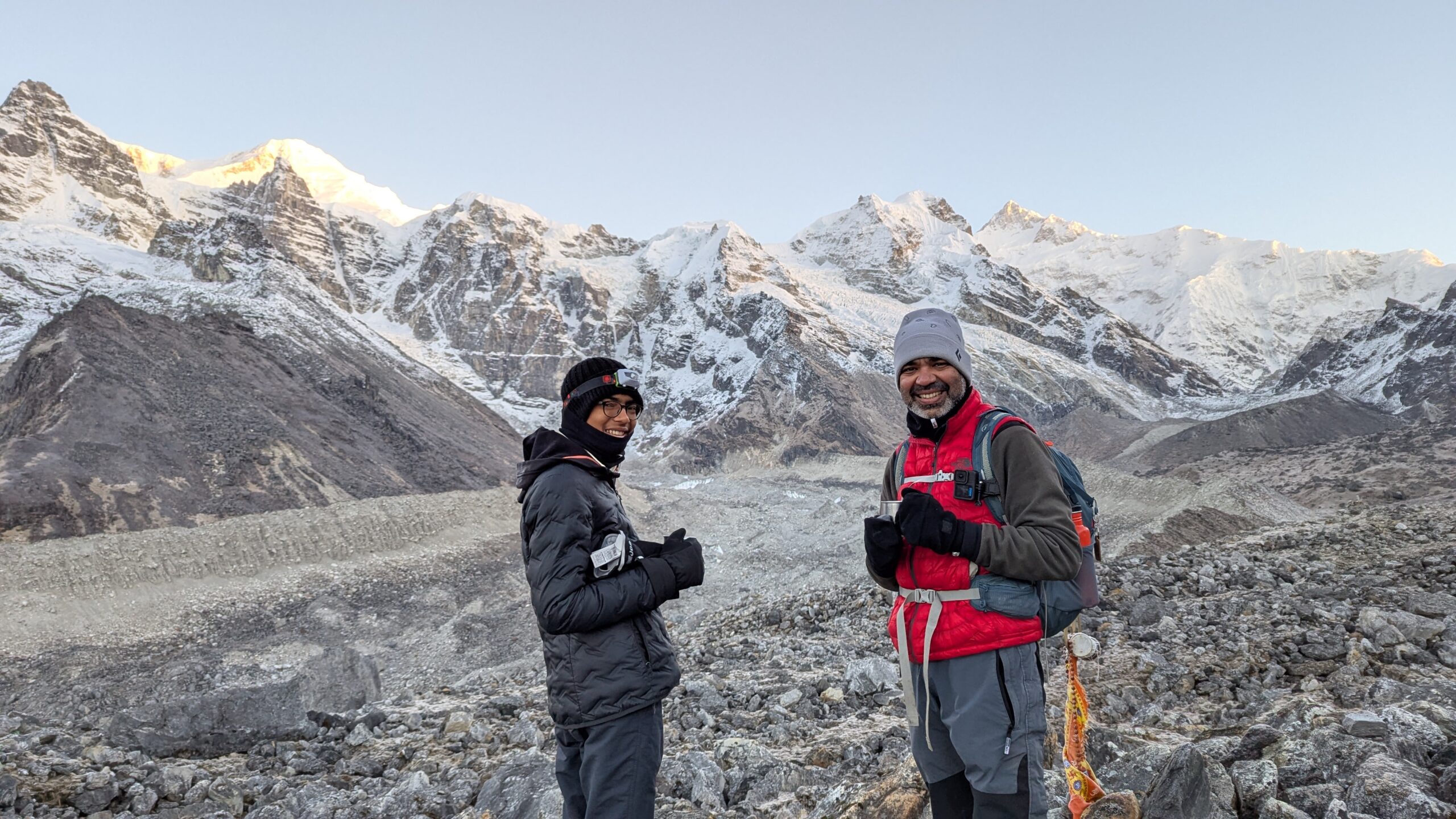
The first day of my Goechala trek, from Yuksom to Sachen, unfolded with an unexpected fluency that caught me by surprise. I had braced myself in the past few weeks for something far more arduous, but as we set off from Yuksom, the trail welcomed me with an amazing nimbleness.
At the start of the trek, we passed multiple houses with some of the most astounding flower beds that could ever exist. They were adorned with hundreds of beautiful, bright, and elegant Rhododendrons and Magnolias. The path wove through a lush forest under a canopy of green, with early morning light filtering through tall trees. The earth beneath my feet felt firm, the air cool, and the scent of damp leaves wafting into the air. I settled my breathing into a steady pace, and a small part of me began to believe I was better prepared for this than I had thought.
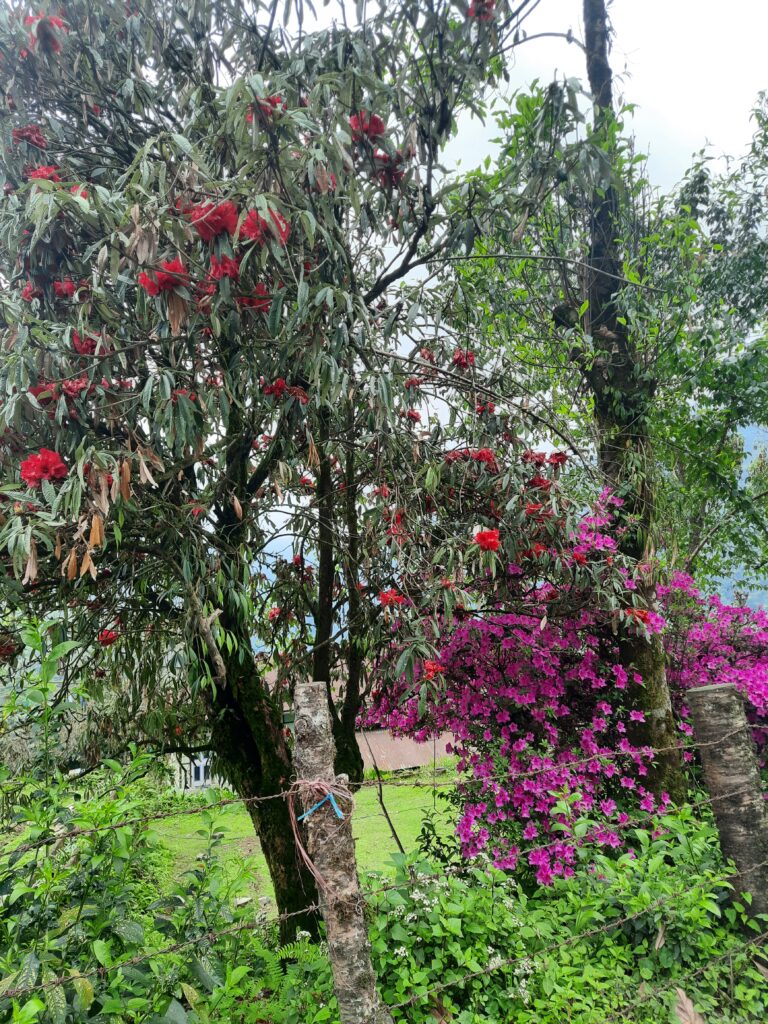
Uphill sections followed. They rose in gradients, winding around mounds of mountain rather than climbing steeply. We passed multiple suspension bridges adorned with prayer flags on our journey. My steps felt strong, with my father and I moving at a good pace. With each turn of the path, the forest thickened around us, and I found myself enjoying the forest rather than waiting for the snow-capped mountains to show.
Then, as we plowed ahead, the sky began to change. The clouds, which had been drifting harmlessly all morning, began to gather. The wind picked up and the leaves began to sway. And then – just as we were about twenty minutes away from Sachen – the sky opened up. It didn’t drizzle or build up slowly. It poured. Literal sheets of water fell without warning, falling on the leaves above and quickly turning the trail to a muddy mess. My shoes squelched as I moved, and each step required more concentration.
Thankfully, as we reached the muddy lands of Sachen, the rain eased. We were drenched, but it gave us enough of a window to settle in. Our hardworking kitchen team brought out chai and a packet of biscuits.
Then it started again.
This time, the rain roared against everything, shaking the earth itself. We rushed to shelter, diving into our tents just as the storm released its fury. For the next four hours, we stayed inside, the fabric of the tent trembling under the sheer force of the downpour. Outside was a cacophony of water, wind, and falling leaves. Inside the tent, my father settled on his mattress listening to the rhythmic pounding of raindrops, and I opened my book – The Hitchhiker’s Guide to the Galaxy – and read away, drowning myself in fantasy.
Later on, as the sun set and the Rain Gods began showing mercy, we went outside for dinner. We learnt that the meal had taken at least ten times the effort to make, for there was a literal river flowing through the kitchen tent. I could only imagine the trouble the kitchen team would have faced to create that scrumptious meal we were eating.
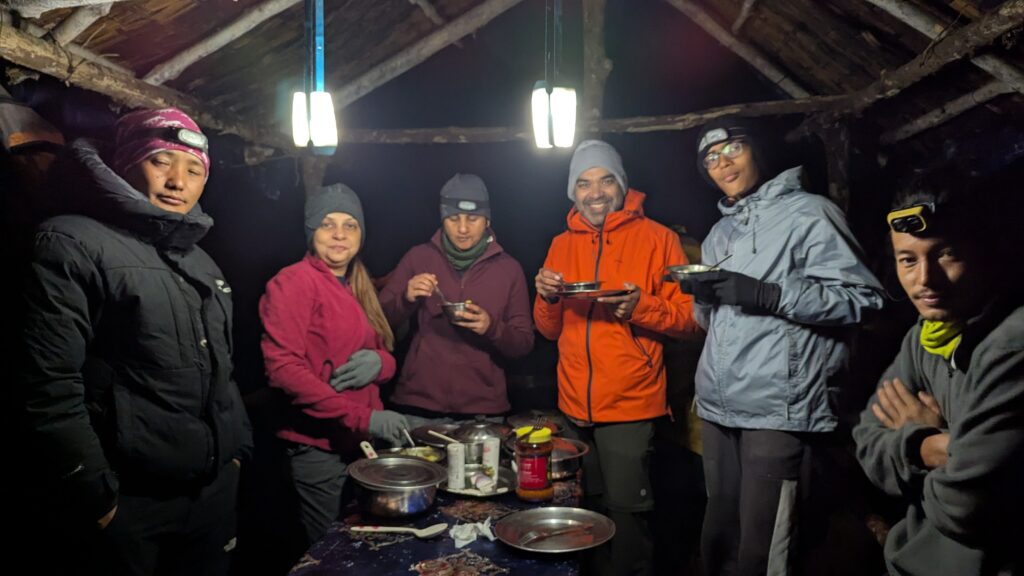
That night, we retired comparatively late, taking our time to brush and change our clothes.
All in all, it was a pretty short and easy day.
Sachen to Tshoka – A Beautiful Trail
The next day we woke up, had a quick breakfast and left for Tshoka.
This day, from Sachen to Tshoka, was longer than the first, but still surprisingly manageable. We set off under a slightly overcast sky, but nothing to be worried about. As we left our phones suddenly picked up traces of a signal, and we were able to make a quick call before we began moving for good.
The trail began gently, with a relatively flat path winding through towering, magnificent trees cloaked in damp moss and ferns. The ground was not slippery at all, a surprising find noting the rains of the day before, and the atmosphere was quiet save the soft crunch of our boots and the occasional birdcall.
Before long, the flatness gave way to an uphill climb. The forest thickened here, almost enclosing the path in green. Eventually, the trail dipped, and we started descending towards the river. The slope was long and winding, shaded by tall trunks and a canopy of leaves, and soon we could hear the rush of water below.
The trail narrowed and dipped through a patch of thick undergrowth before opening up to the flowing water. It was quick and rushing, tumbling over rocks in a cheerful current, and clearer than any river I’ve ever seen. The air turned cool, the bridge crossing it limp yet sturdy.
It felt like a milestone, because from there, the trail climbed sharply.
The ascent to Bakhim was the toughest stretch of the day, but not too bad that my knees would collapse. It was long and steep, going once again through dense forest. Yet even here, I felt strong. My pace was steady, and the beauty of the surroundings helped keep me distracted. Slowly, the trail began to change and a more open forest decorated with Magnolias faced us. Their delicate white petals stood out against the green, and in a few patches we also saw the first hints of rhododendrons.
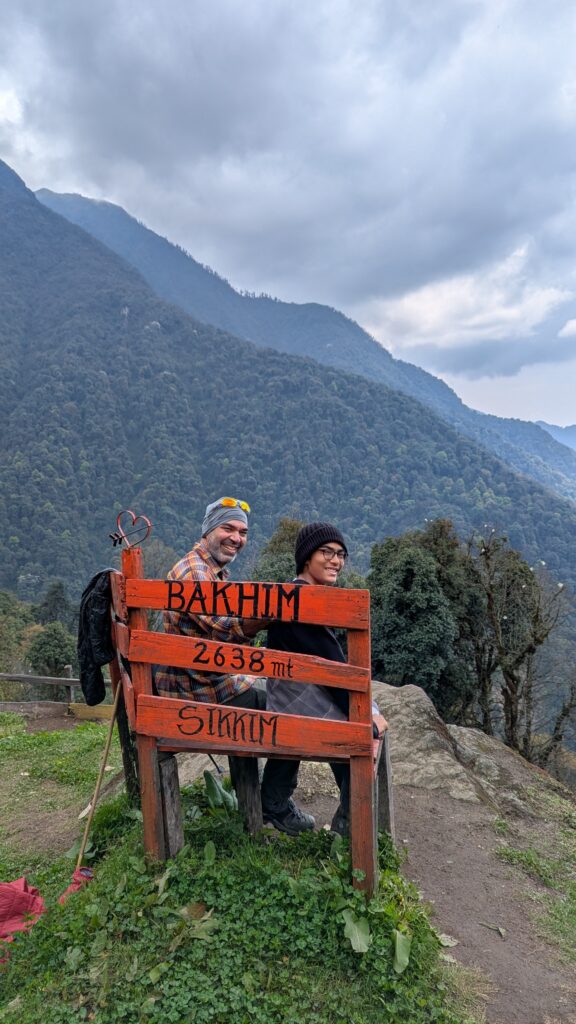
bakhim sikkim 2638 meters
Bakhim itself was a lovely spot, perched on a small, flat outcrop with open views. The clearing was full of flowers, and the air carried their sweet scent. We stopped there for lunch, eating our rice, and then treating ourselves to some warm Maggi.
From Bakhim, the trail continued upward. We entered rhododendron country. Huge trees lined the path, their gnarled trunks dotted with rhodos created an almost fairytale-like scene.
Finally, we reached Tshoka. Nestled on a high, grassy plateau, it was scattered with wooden lodges and huts. We stayed in one of the huts that night, a warm, cozy change from the tents.
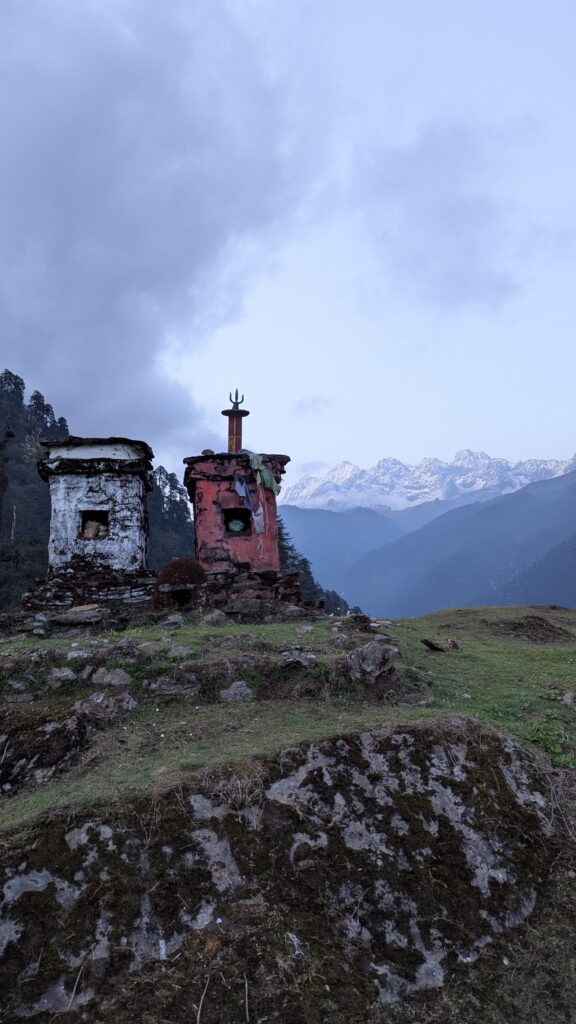
Just a minute’s walk away was a small monastery. It was closed, but beautifully painted in bright red and yellow colours. In the distance, we saw a few mountain peaks, and once, we even spotted Mt. Pandim through a break in the clouds. Next to the monastery, a tiny lake shimmered in the light. Though not completely clear, the water still reflected the sky, treetops, and faraway mountains beautifully.
We ate a yummy dinner and then slept early, for the guides were warning us about our next day to Dzongri.
Tshoka to Dzongri – A Muddy Day
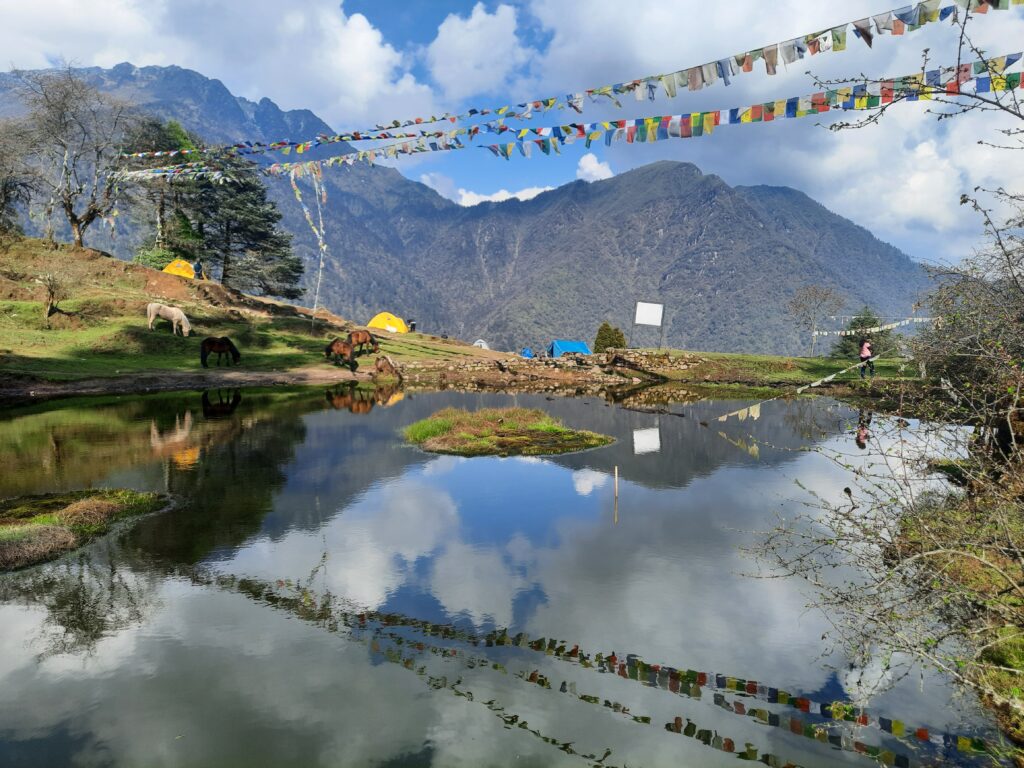
The day from Tshoka to Dzongri was meant to be the hardest stretch of the Goechala trek, and I’d heard plenty of warnings about the steep climbs and long hours. But to my surprise, it turned out to be one of the most enjoyable days so far – at least for me. We set off early from Tshoka, with the sky bright and decently open, and the trail immediately tilted upward. It was steep right from the start and incredibly muddy. Thick, wet soil clung to my boots, making each step heavier. But even with that, I found my pace and stuck to it.
The forest around us was beautiful, quite a few rhododendrons now, with long, gnarled, and twisting trunks and bursts of color in between. The higher we climbed, the quieter it became. The steepest part of the day stretched all the way to Phedang, and while the climb was relentless, my legs felt strong and steady. I could feel the altitude creeping in, but I didn’t let it slow me down.
When we reached Phedang, the world had disappeared into fog. It was incredibly misty, with thick clouds wrapped around the trees. We took a break there, drinking water, eating a few momos from the shop, breathing, and watching the mist shift.
From Phedang, the trail continued upward, but less steeply. The trees began to thin out as we got higher. Soon, we heard whispers from Dzongri, heading towards them in relief. Watching it appear from the mist felt amazing, a truly grand reveal.
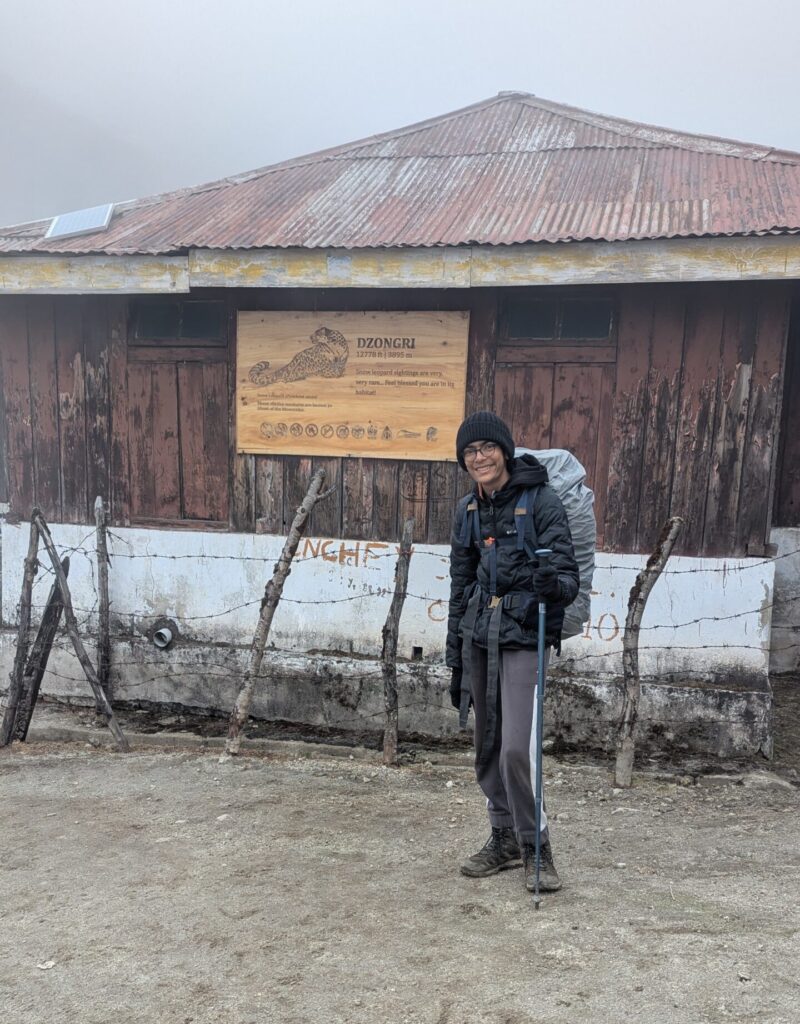
We were among the first to arrive. Me and my father were two of the first five to reach Dzongri out of all the trekking groups that day. It felt good to have kept such a strong pace. At a nearby shop, we bought hot, crisp samosas, and I don’t think anything has ever tasted so satisfying in the cold. After settling into our rooms, the weather took a dramatic turn. It began snowing heavily, thick snowflakes falling fast and turning the land white within minutes.
Later, the snowfall stopped, leaving a soft blanket across the slopes. My father and I then went for a small excursion to a vantage point ten minutes away. The second we stepped onto the point and looked around, we were completely speechless. An amazing gradient was seen on all the mountains around, turning a view into a painting. That day I slept well despite the lingering cold, because the day had gone better than I ever expected, and the supposed toughest leg was behind me.
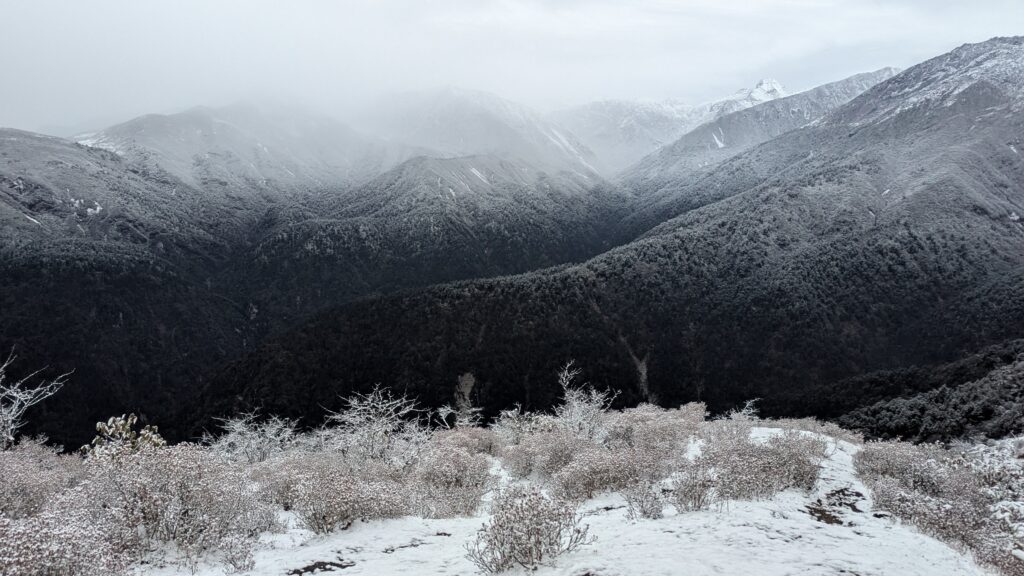
Dzongri Top – Anticlimax or Astounding?
The next day we went to Dzongri Top.
Stories about Dzongri Top had accumulated in my head throughout the last few weeks. Everyone said it was the place where Kanchendzonga would finally reveal itself in all its glory. So when we began the slow climb in the void darkness of early morning, I carried a jacket, water bottle, headlamp, and heart-wrenching anticipation with me.
The trail snaked upwards through dry bushes. Our breath was turning into mist around our heads. The dawn started coming, and soon enough it was wrapped around us like a blanket. A melodious symphony of chirps filled the air, only broken by the crunch of boots. We, huffing and puffing, zig-zagged our way through thin paths, our bags brushing against snow-covered plants. As the sky began to brighten, our pace quickened as we were eager to catch the first rays of sunlight engulfing the mountains.

goechala trek
Unfortunately, nature had its own plans.
When we reached the top, a small flat area decorated with vibrant prayer flags and small stacks of stones crowded with groups waiting for a good picture, instead of the grand reveal I’d imagined, with the first rays magnificently bouncing off snow-capped mountains as the clouds slowly revealed the mighty Himalayan range, we were met by a thin yet disappointing fog. Clouds were laid directly over the range, as if the curtains were drawn across brilliant peaks. Visibility was not as limited as a white-out, but the postcard view of Kanchenjunga remained hidden, tucked away in its fortress of solitude.
And yet, in the midst of that, there was something unexpected, and quietly beautiful. As the sky slowly lightened, I began to notice a strange blue tint on the mountains ahead. It wasn’t the bright blue of a clear sky, or the white-ish shade of ice – it was a soft, misty light blue. The ice-capped peaks, ridges, and valleys below the clouds seemed to glow with this hue. Moreover, the peaks I did see did not disappoint, in fact, their rocky complexion blended with a frosty hue and gave me a surreal feeling.

I stood there, hands in my pockets and wiggling my feet, and felt a calm settle over me. The wind snapped at me and the horizon remained hidden, but I no longer felt let down. In that moment, I was just looking at the grandeur of mountains on a scale no human has ever even started to achieve.
Dzongri to Thansing – Testing my Endurance
The Geochala trek had, until this point, unfolded surprisingly easily for me. Where others said they had struggled up the steep trails to Dzongri, I had moved easily. However, that ease and nimbleness came to a halt on the day we left for Thansing from Dzongri – a day that tested my endurance.
We set off around 8:45 in the morning. The sky was a dull grey and the air was thick with fog. I began the day feeling decent. The trail was unfolding beneath my feet as easily as before. Unfortunately, not long after, a weight started to settle on me, growing larger with each step. Perhaps it was the altitude finally catching up with me, or maybe I was feeling slightly off. Whatever the reason, fatigue started creeping into my limbs, which succumbed to the weakness almost immediately.
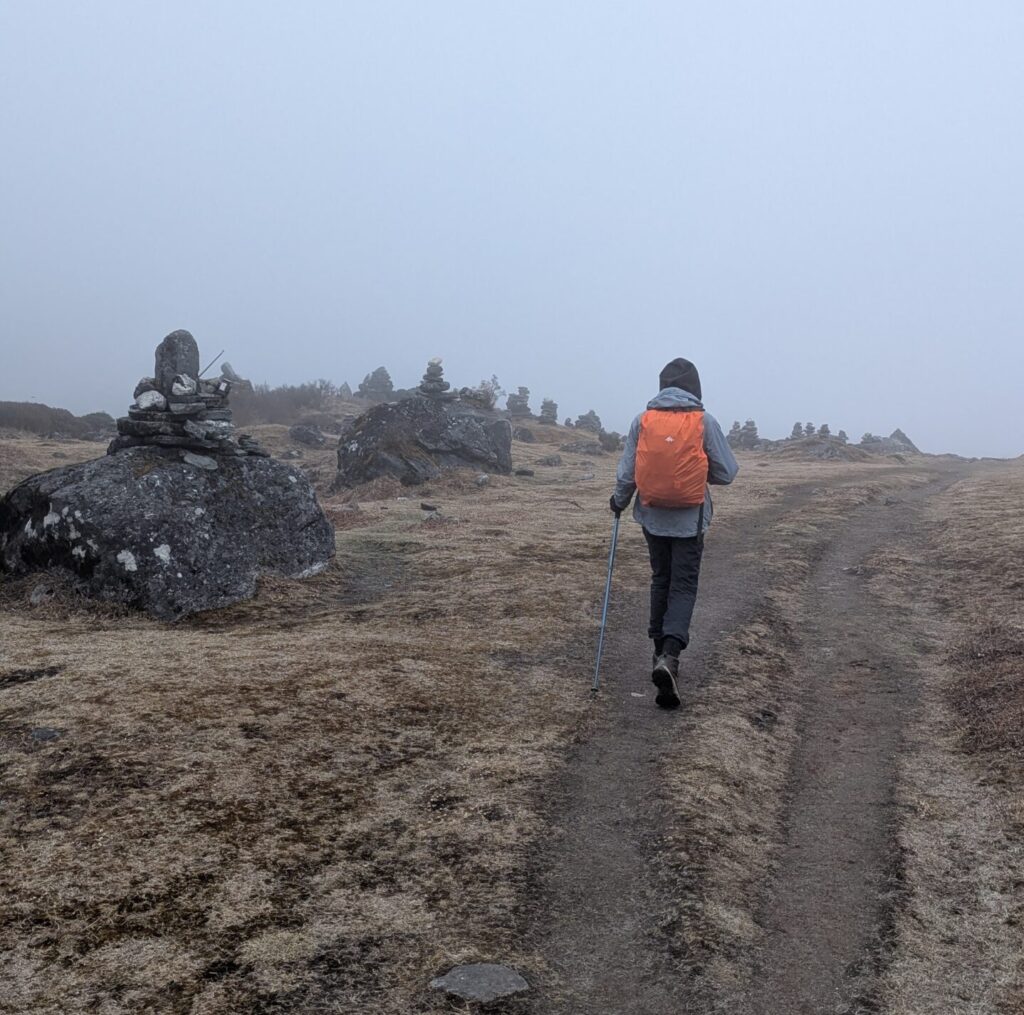
The landscape, despite being veiled in an impenetrable mist, was simply stunning. Rolling hills emerged and disappeared as far as the eye could, their outlines blurred and constantly changing. We kept glancing at our phones, hoping for even the slightest flicker of signal, but the thickening fog made sure we were isolated.
I walked slowly, measuring each heavy step to preserve energy. Eventually, we reached a large flat stretch (flat in this case means a little up and a little down, averaging out to a flat). The openness gave a sense of relief from the never-ending hills. A raging river ran next to us, its movement providing contrast in the most stark of environments. We kept hugging it, walking parallel to it until we reached our destination.
By the time we reached, I was drained, mostly mentally. In Thansing, a cluster of huts awaited us. We stayed in one of them, four of us squeezed into a single room. The cold was not that intense, but the freezing metal didn’t do much insulating to make us feel better. I looked outside. The fog hadn’t lifted all day. There was not even a glimpse of the famed Mount Pandim or the mighty Kanchenjunga, it was only a pale, blank sky pressing down on us.
Not the Final Push to the Summit
The evening before, we had made a spontaneous decision. Instead of following the original itinerary, which had us continuing to Lamuney and summiting from there in the morning, we decided to push for the summit that very night. We were eager to keep moving and shave a day off our trip, the crowded huts and creeping cold nudging us towards our decision.
We settled and prepared for our forthcoming adventure, covering ourselves in layers and packing our bags. Later, for a brief moment of warmth and laughter, my father and I joined a group that was heading to Lamuney and played a few rounds of Mafia with them. I then went to sleep early, knowing we’d have to be up before the rest of the world woke up if we wanted to catch the sunrise.
At midnight, we woke up, my father jerking me from my sleep. Outside, the darkness was almost palpable. We ate a quick breakfast – either Upma or Poha, I can’t remember – and started making our way towards the summit. The sky was still blank and carpeted in fog. No stars, no mountain silhouettes, just a thick blanket of cloud. Anxiety started creeping from under my resolve. I, along with the rest of the group, hesitated, unsure whether the trek would be worth it if the skies stayed like that.
However, we decided to continue. At least until half an hour in, when it began to snow. The moment those miniature ice cubes fell on the palm of my glove, my heart stopped and every hope I had of seeing Kanchenjunga bathed in sunlight started drowning.
We waited, trying to rekindle the hope, but the snow increased. After fifteen minutes of waiting under that frozen sky, we made the call to turn back. We, after much heated discussion, would stick to the original plan and head to Lamuney the next day instead. Disappointment clung to me as I retraced my steps, hoping we made the right choice.
And it was. The next day, our prayers were answered and the skies cleared. I was almost as if every single cloud had decided to take a vacation. Grand mountains burst into my view, sharp and magnificent. Mount Pandim, Kanchenjunga, and tens of others were bathed in sunlight.
That day from Dzongri to Thansing, despite having an extremely easy trail, still remains the hardest for me on the trek. That night also made my list as one of the ‘most nerve-wracking and anxious’ moments of my life, and the next would have made my ‘worst experiences’ list had the skies not opened up.
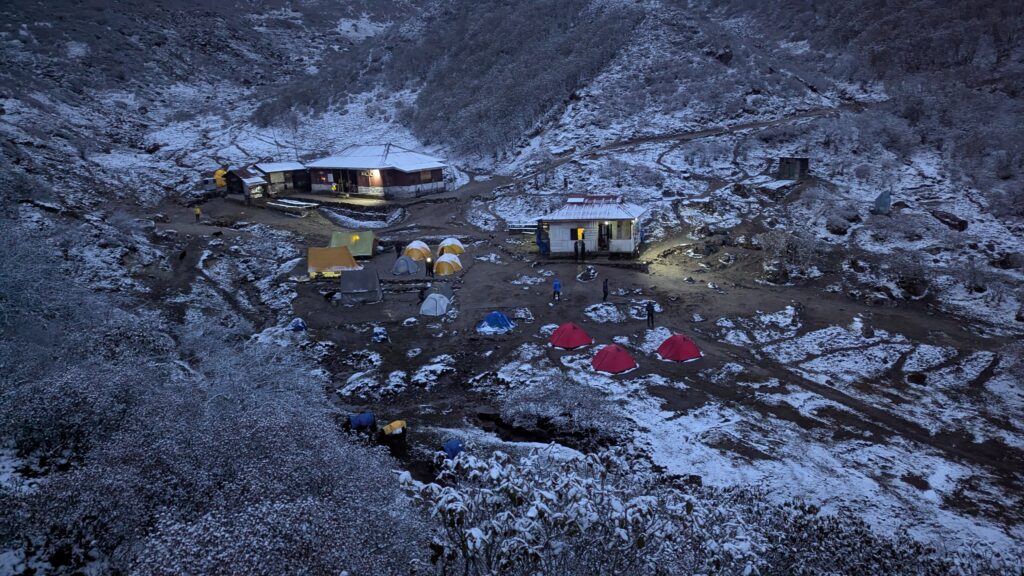
The Summit
The summit day of the Goechala trek was everything I had hoped for, and far more. It began gently, with a short hike from Thansing to Lamuney. The trail was calm and quiet, either winding through open meadows or running parallel to the river, with Kanchenjunga still hidden behind a curtain of mist. The walking was easy, and we reached Lamuney in just about an hour and a half.
The terrain wasn’t difficult at all, something that was contrary to what everyone had been saying about the Goechala trek, and I felt well-prepared. The landscape around us was sparse but beautiful – pale green plateau stretching ahead, grey boulders scattered across the land, and occasional patches of wildflowers clinging to the rocky soil.
When we arrived at Lamuney, however, the weather shifted quickly. The clouds thickened, and without warning, a heavy downpour began. It wasn’t just a drizzle, it rained with force. The temperature dropped, and the rain soaked the earth. I was surprised, since at this altitude and temperature it should be snowing, but it looked like nature was in the mood to defy. We huddled in the kitchen hut, listening to the rain and wind.
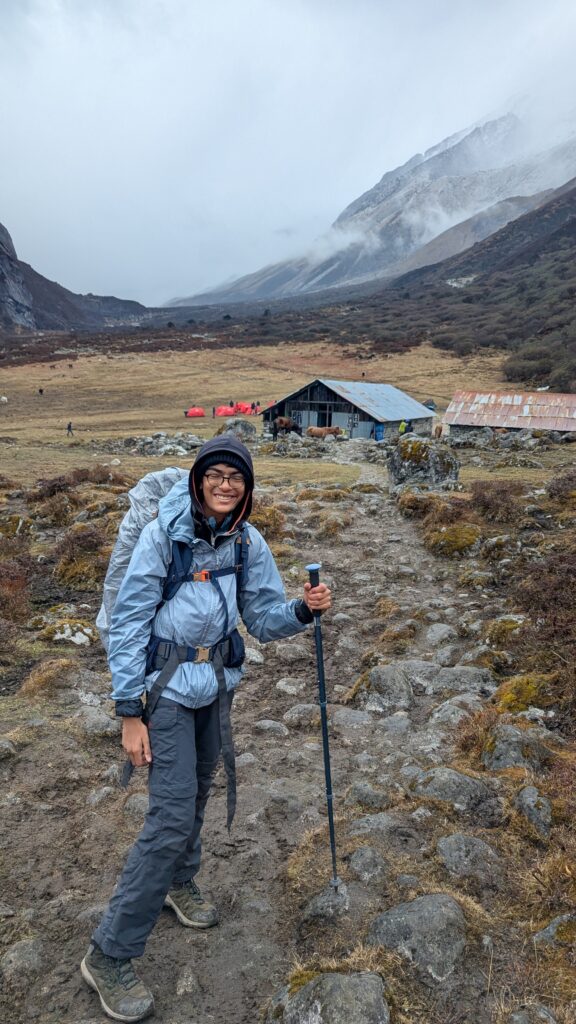
I started getting worried. My brain pounded with thoughts. Would it clear up by the night? Would we get to see Kachenjunga in this weather? I started overthinking. Thankfully, it didn’t last. The storm eased, the sky lightened, and the mountains began to finally show themselves.
Outside, the view had transformed. Though the clouds hadn’t cleared completely, we began to catch glimpses of the amazing Mount Pandim. Even half-hidden, it was majestic. Its sharp ridges and snow-lined slopes sliced through the mist, and it stood like a sentry, watchful and still. Each minute the clouds parted just a little more, rekindling my hope.
Night fell quickly over Lamuney, and what happened next was nothing short of otherworldly. Around 8 p.m., the sky completely cleared. I looked up, and a dome of infinite stars stretched out above. There were no city lights, no noise, no interruptions to take me out of my trance. Mars and Venus glowed among the hundreds of constellations and, to our astonishment, we even saw the International Space Station drift overhead.
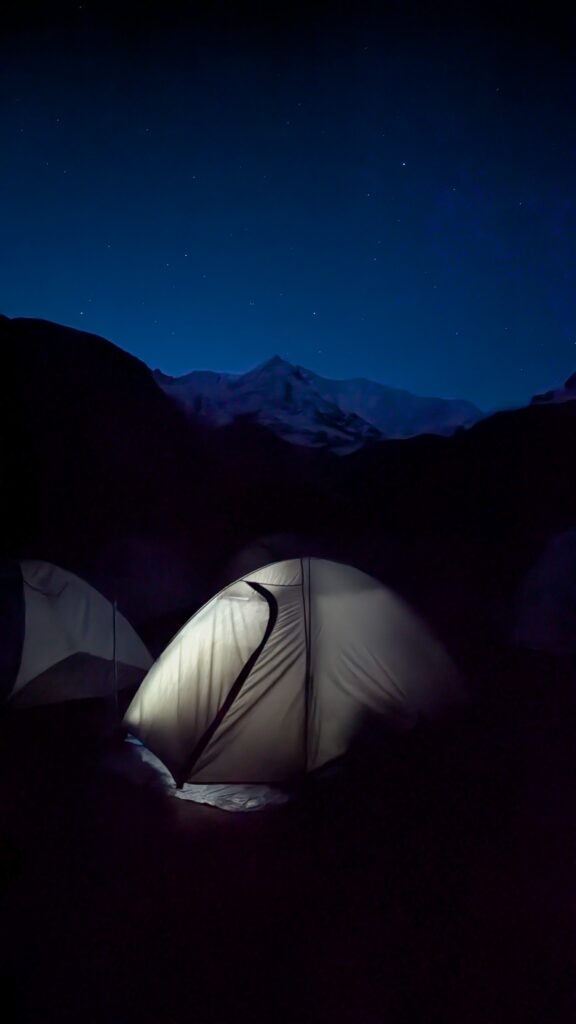
And then we saw them. First Pandim, glowing in the moonlight, and then, behind it, far away, the full towering form of Kanchenjunga. The entire ridge was clear – ethereal, massive, and impossibly beautiful. I stood outside for a long time, staring up in silence.
Eventually, I went to sleep, knowing the real climb still lay ahead. We woke up at 1:00 a.m., stepping out into the icy dark by 2:00. The night air was freezing, our breath clouding in the light of our headlamps. But despite the altitude, my father and I moved quickly. The trail was lit only by our torches and the dim glow of starlight.
In what felt like no time at all, we reached Samiti Lake.
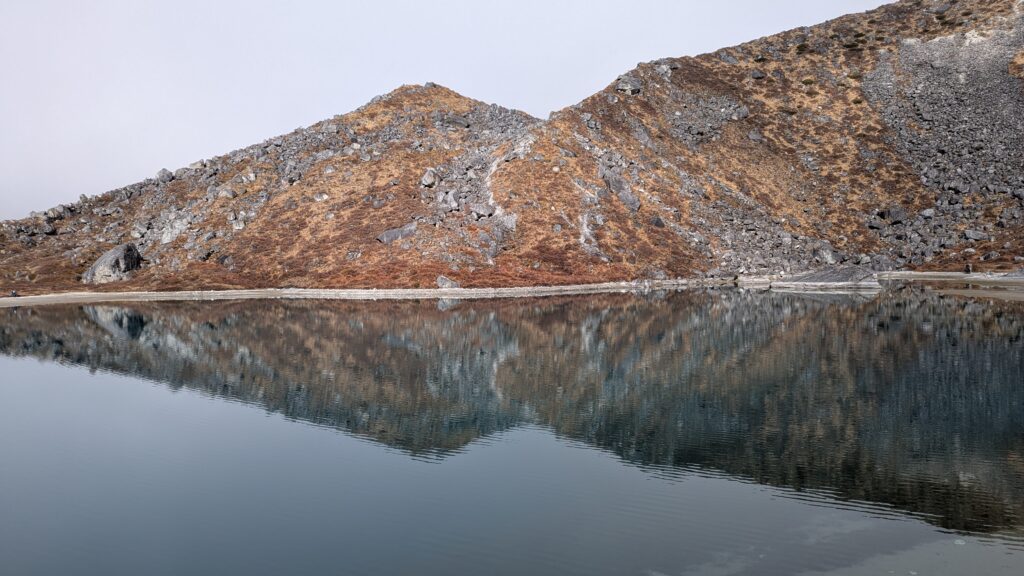
Samiti was like something out of a dream. In the deep night, with no wind and no noise, the lake lay utterly still, glassy and perfect, reflecting the surrounding peaks like a mirror. I had seen pictures of Samiti Lake, but nothing compared to standing beside it in the darkness.
We continued climbing at a good pace, winding up the slope in the dark. The sky was beginning to faintly lighten. Just a slight trace of deep blue emerging from behind the mountains. As we neared the summit, we met another group who advised us to slow down. If we reached the top too early, we’d end up waiting in the freezing cold. So we slowed ourselves.
At around 4:45 a.m., we reached the Goechala Viewpoint. It was still pretty dark, but the sky behind Kanchenjunga had turned a pastel orange. Then, slowly, the colors shifted. From orange to blue to pink to, finally, gold. And the first light touched the summit of the third-highest mountain in the world.

It is not possible to put into words how surreal it felt. Kanchenjunga lit up, glowing golden while the rest of the world still lay in shadows. Around it stood the full range of Himalayan giants – South Kabru, North Kabru, Mount Pandim, Tenchenkhang, and more. Each peak caught the light one after another. It was the most amazing thing I have ever seen. As we stood there, watching the world brighten, clouds began to roll in behind us. From the summit, we looked down and saw oceans of clouds pouring in. After quite a while, we began the descent, reluctant to leave but filled with awe. We reached Samiti Lake again, now carpeted in mist. But just as we arrived, the sky opened up one last time, and we were able to see it clearly again, one final glimpse.
Back at Lamuney, we had a warm breakfast and packed up, saying goodbye to the mighty Kanchenjunga. We then began the return journey. Past the quiet wonderland of Thansing and down towards Khokchurang. The summit day had been long and cold, but magical. And I knew that I would never forget it.
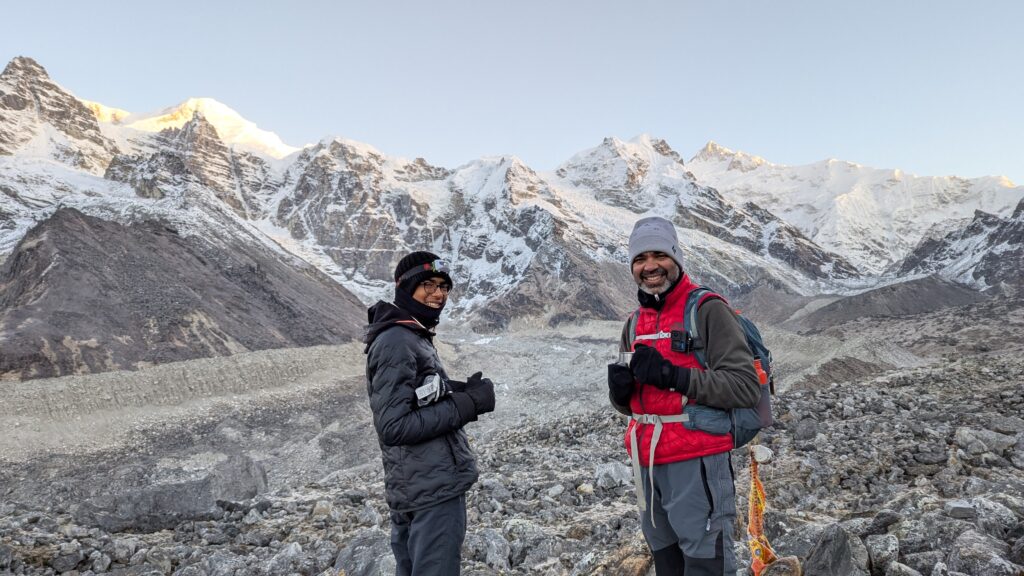
Author:
This blog was written by 14 year old Shaan Shah and is his personal account of the wonderful Goechala Trek in Sikkim.
You can also follow Shaan on his personal substack!

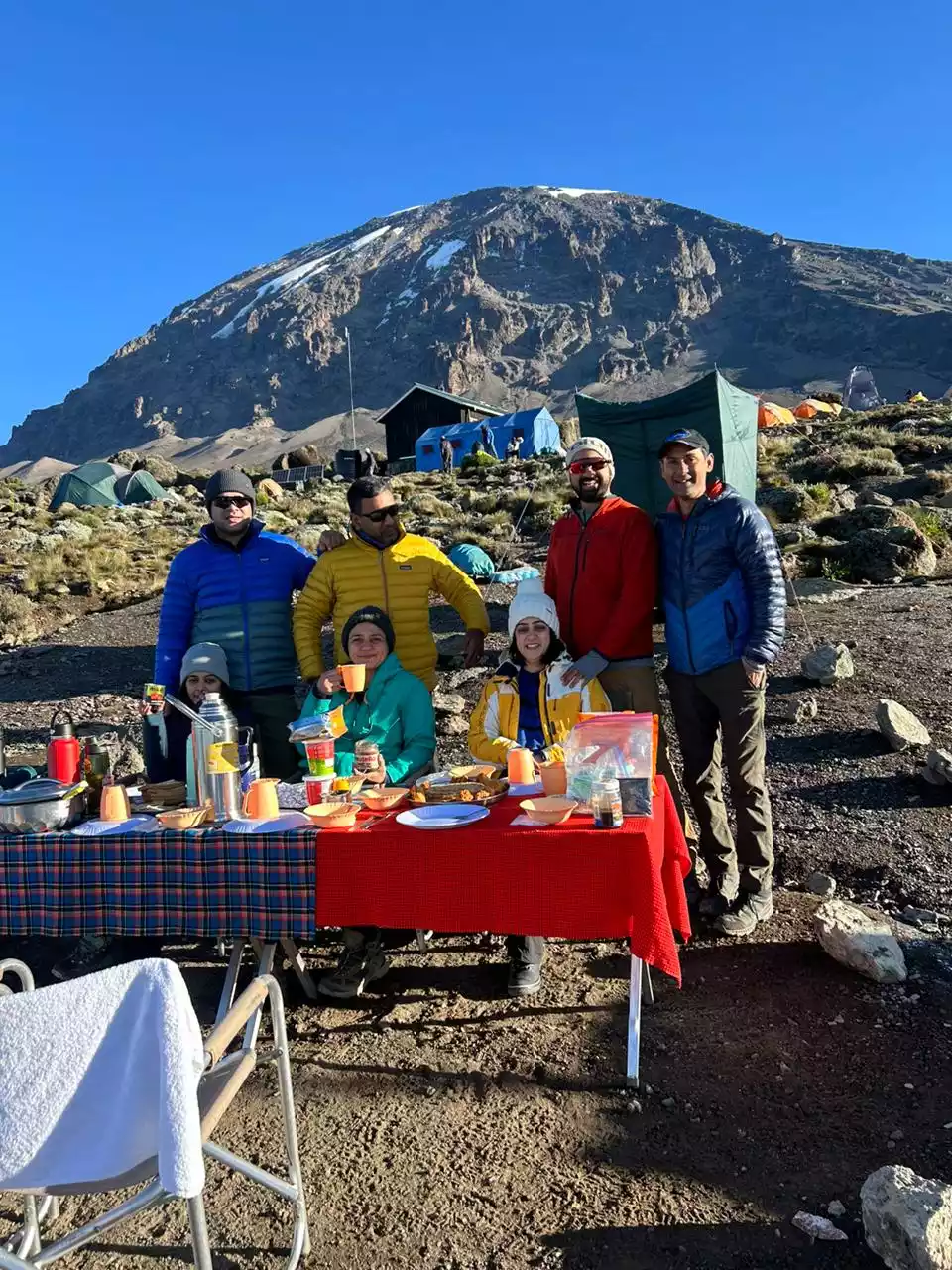
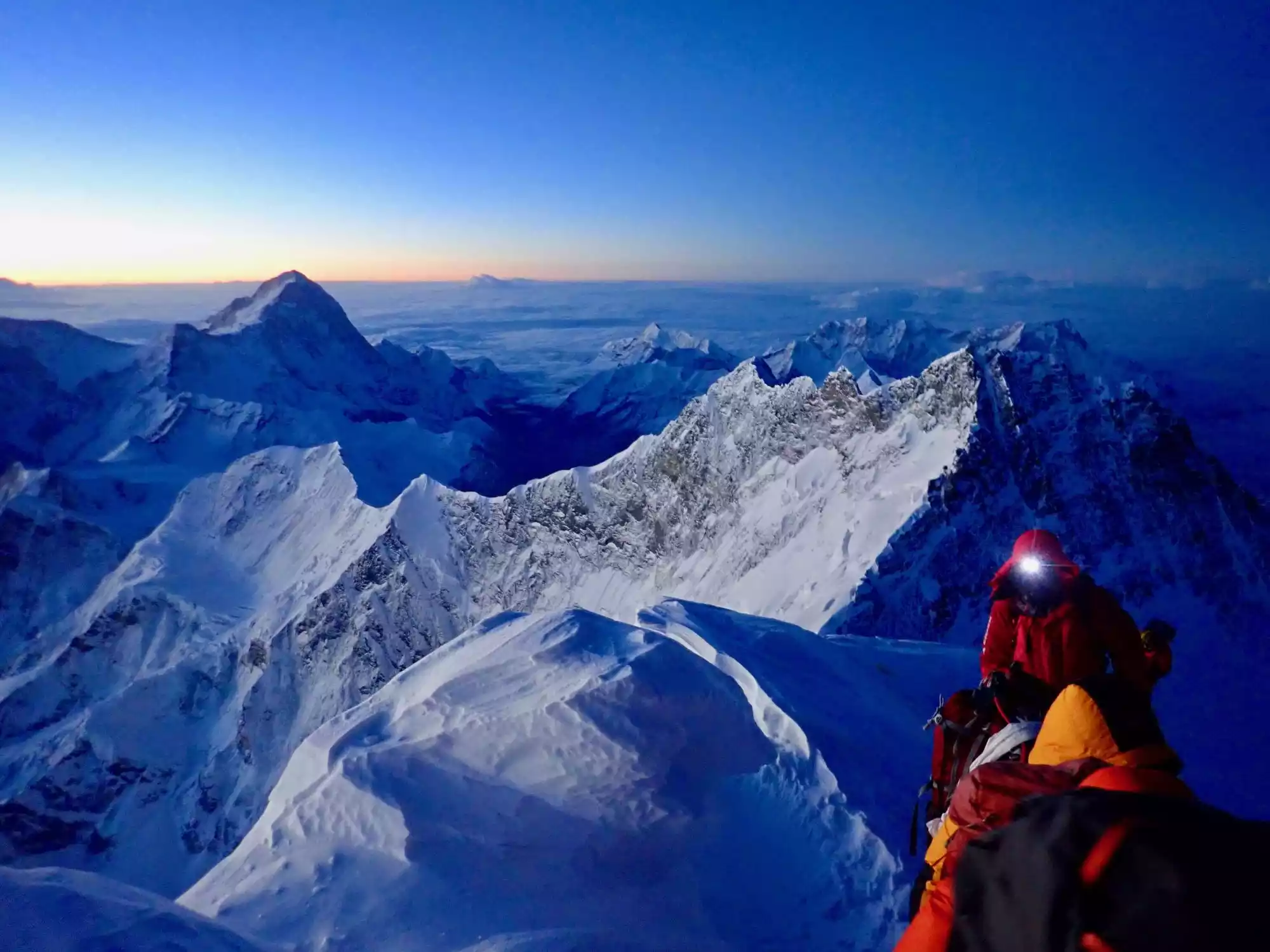
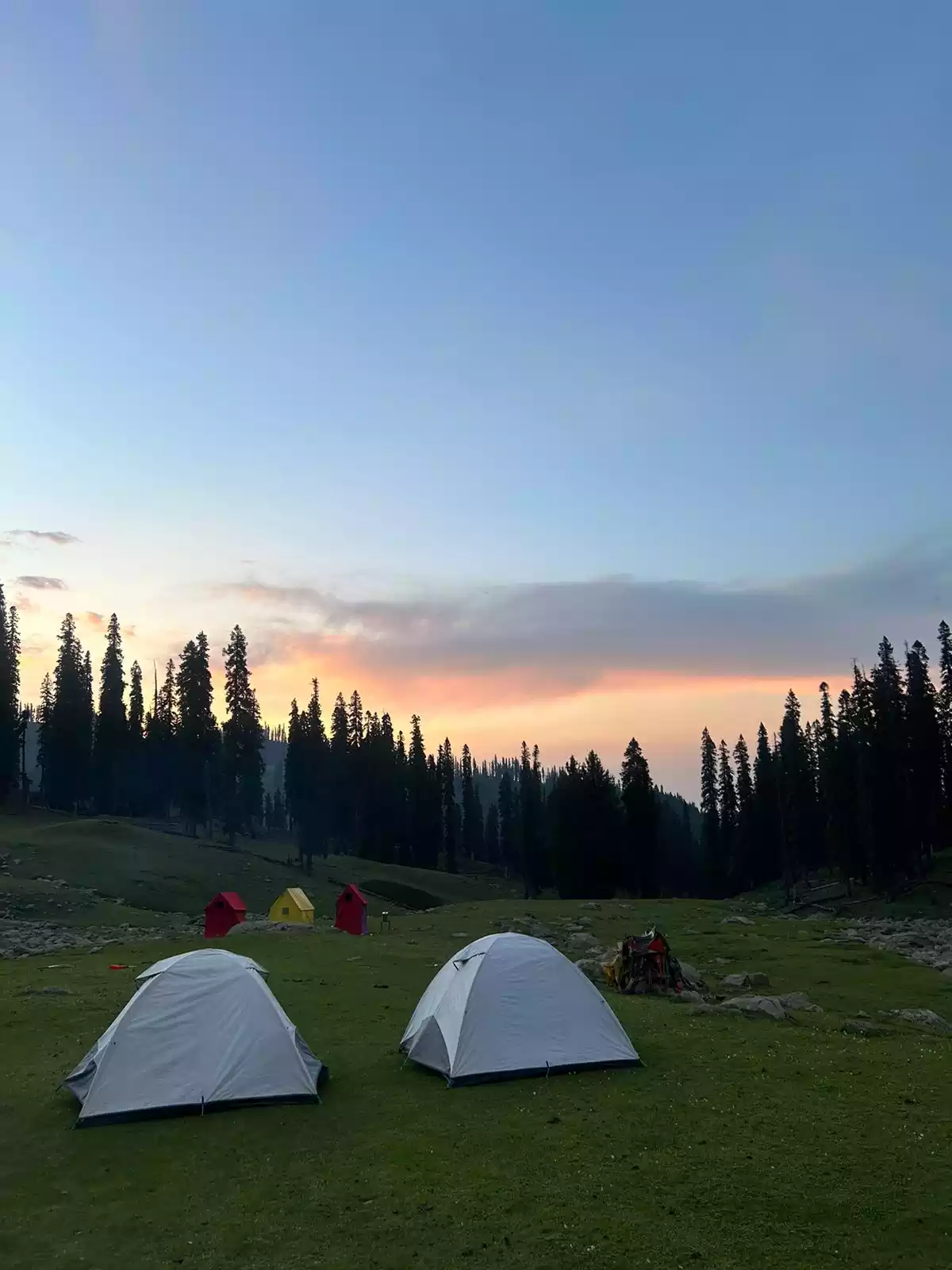
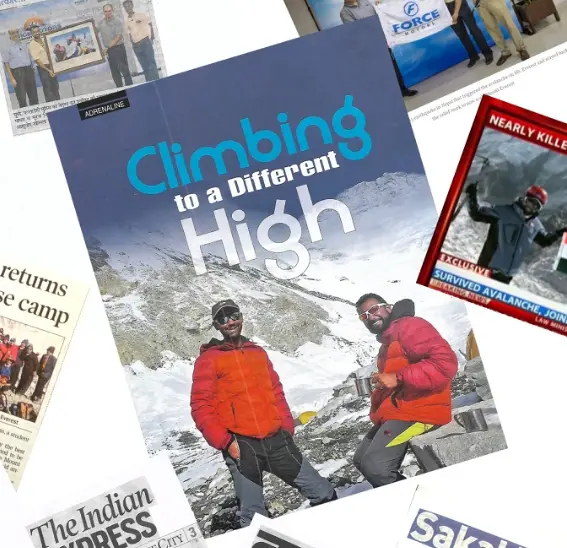
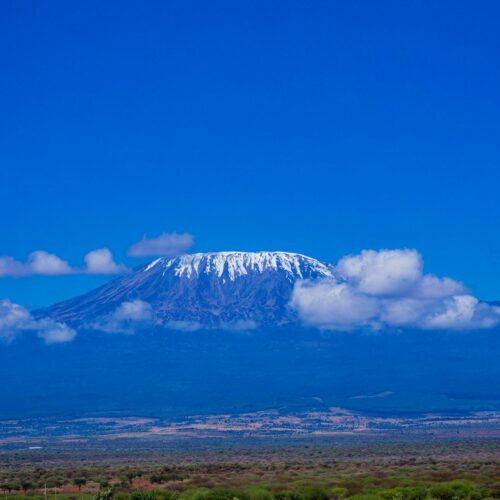
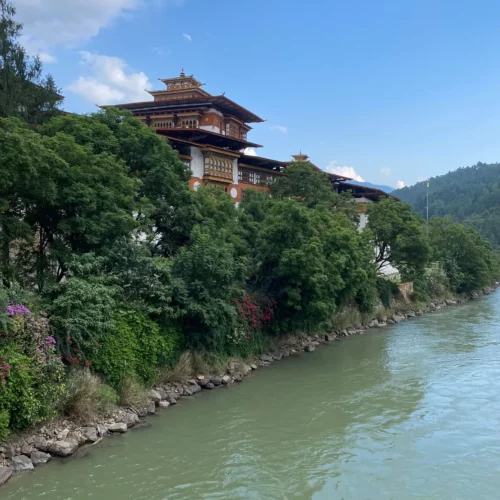
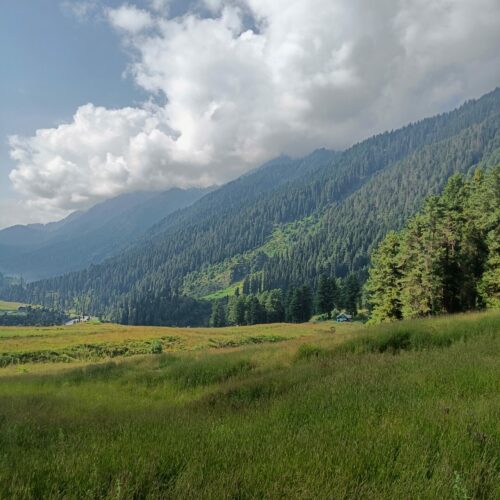
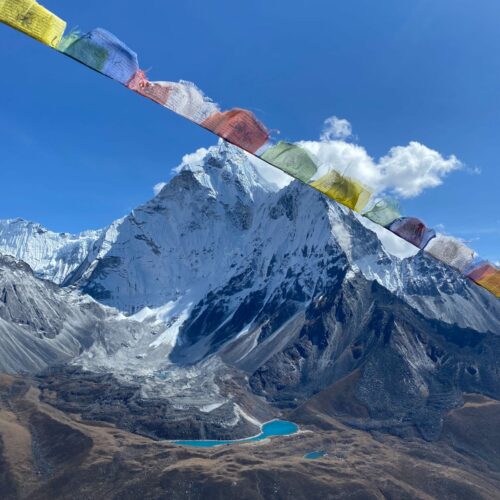
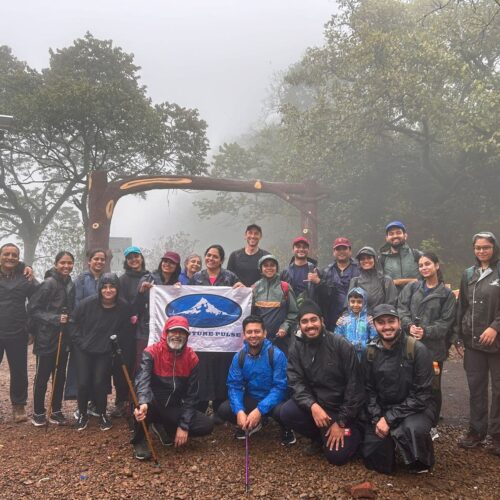
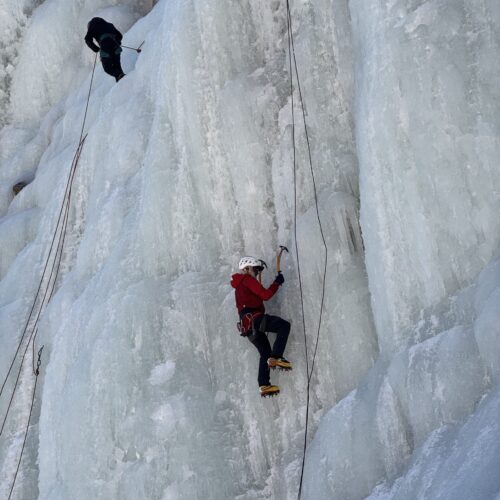
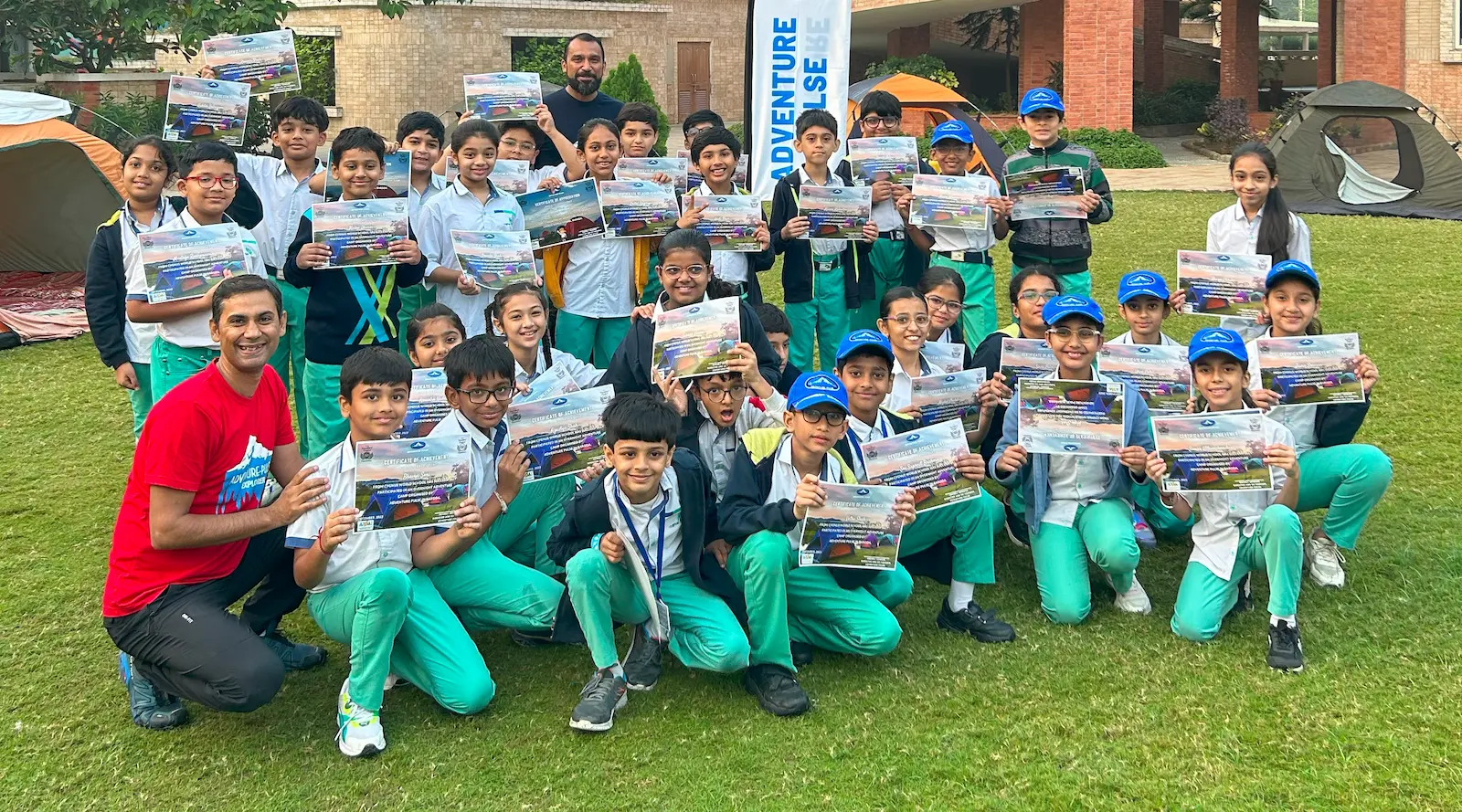
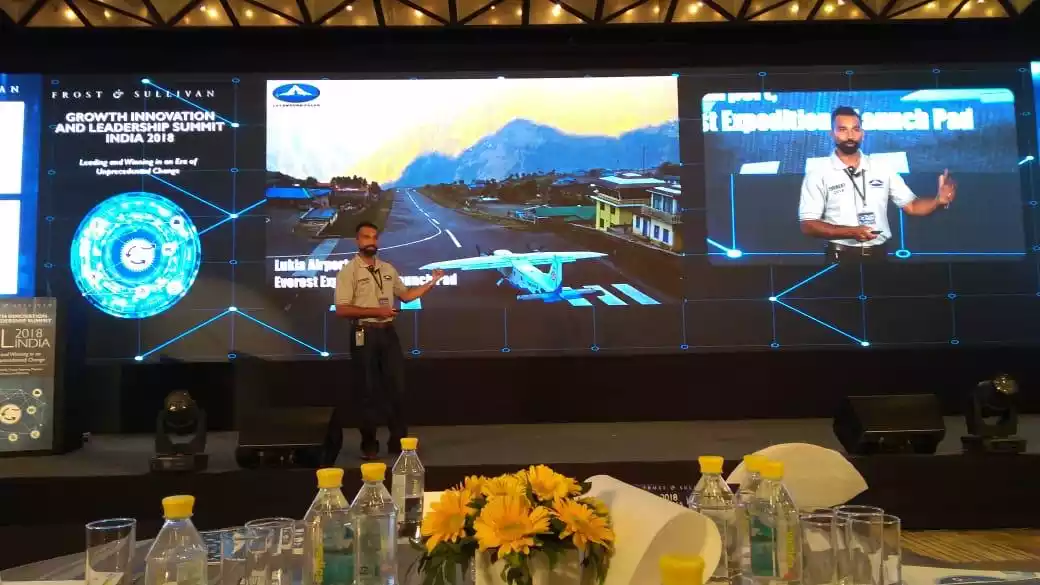
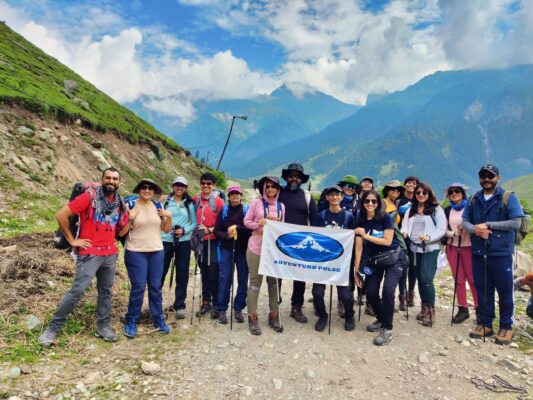
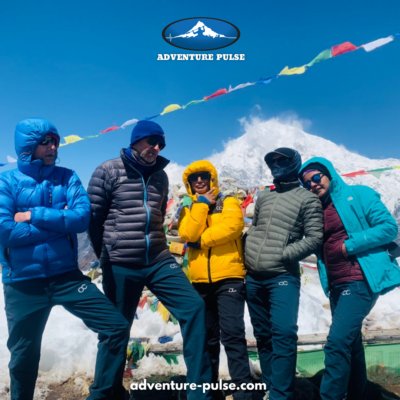
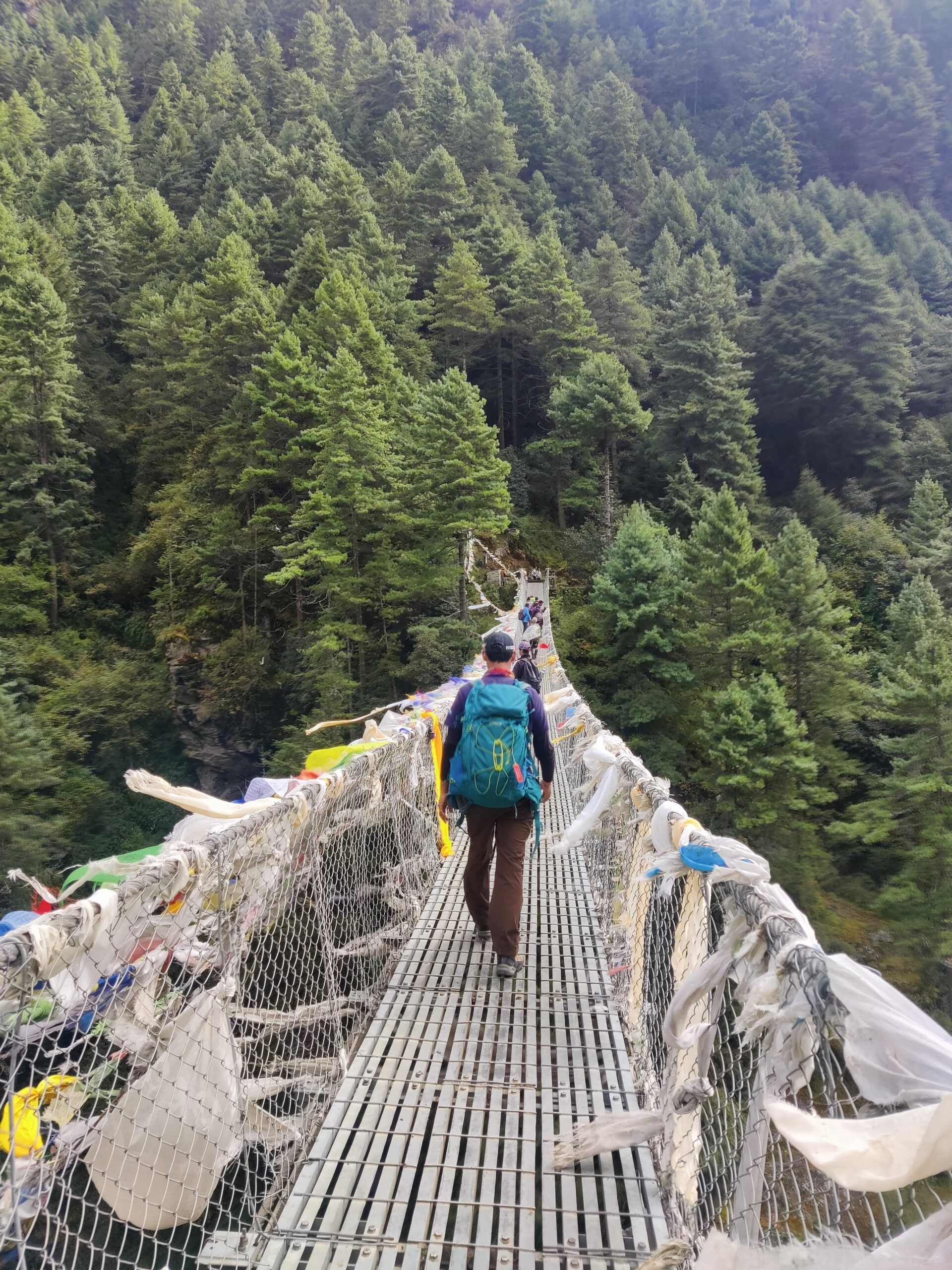
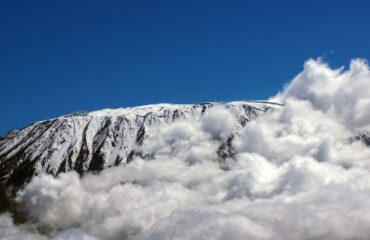
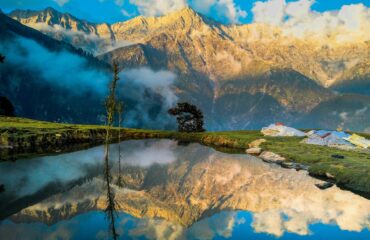
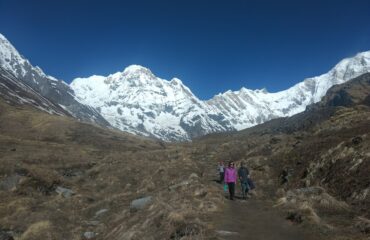
Beautiful rendition of the exhilarating adventure.
Wish article had some dates to understand historical weather conditions. Thanks